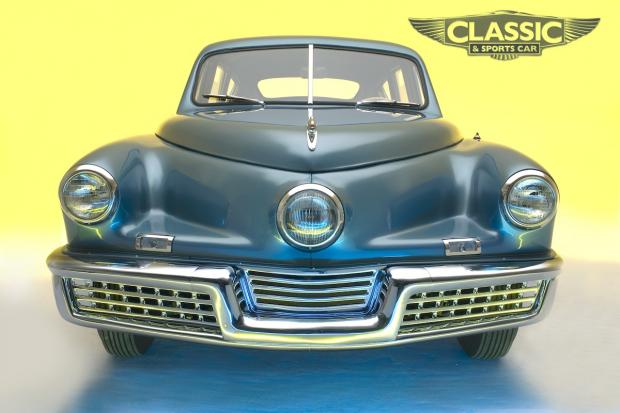
Have you ever stopped to wonder how history might have differed if certain gifted people had never had the chance to make their mark? What if aero engineer RJ Mitchell hadn’t been around to design the Supermarine Spitfire that brought the mighty Luftwaffe to its knees? Or if Ernest Rutherford hadn’t figured out how to split the atom? And how would we view the world today without John Logie Baird’s television?

At the other end of the scale are those whose innovations never got the chance to shine – men whose vision of a new way of doing things became derailed by forces beyond their control. Men such as the single-minded Preston Thomas Tucker, who was driven by a dream to create the safest, most efficient car in the land. But he ended up a David against the Goliaths of American bureaucracy, who were hell-bent on smothering his ideas and the role his car could have played in shaping his country’s automotive future.

‘The first new car in 50 years’ and ‘The car of tomorrow today’ were just a couple of the clever straplines that got the attention of America’s technologically hungry post-war public when Tucker – a Michigan-born car salesman-cum-inventor – started pursuing his life-long goal of making a truly safe car.

Tucker combined the gift of the gab with a flair for engineering. He grew up in the early 20th century, immersed in America’s burgeoning car industry, and left school at 13 to work as a messenger for Cadillac, where he was fired for using rollerskates to speed up his deliveries. That fuelled his ambition to succeed in whatever he did, including a stint as a police officer chasing bootleggers in the prohibition era before taking sales jobs with various car firms. Later he started his own engineering company at his home in Ypsilanti, producing a small combat car that the army derided for being too fast: the military had no need for 117mph performance in battle. Tucker’s subsequent patent for a fully rotating gun turret was more successful, yet the government’s wartime decree that no royalties would be paid left him empty-handed.

Still, Tucker knew that, when the war was over, real opportunities would be there for the taking, especially in the automotive field where Detroit’s involvement in military production meant it would have to offer warmed-over pre-war designs. Years of innovative sales nous (he once took a Doberman puppy in part exchange) had given Tucker an innate sense of what America’s motoring public wanted in a car and he compiled a list of safety and performance attributes to meet their needs. Disc brakes, all-round independent suspension and a headlamp that turned with the wheels were just some of the safety features that accompanied the futuristic styling sketches he published in the press just a year after WW2. Other attributes included a pop-out windscreen – to limit facial injuries – and a steel safety frame surrounding the cabin while the car’s specification promised high performance and super-quick service times.

Never short of ambition, Tucker devised an equally impressive plan to make it happen and leased a facility from the government’s War Assets Administration as a factory. At 475 acres, the former B29 bomber engine plant in Chicago boasted the world’s largest building, in which Tucker aimed to churn out 1000 cars a week.

Although Tucker knew he could sell the idea of the car to the public, he realised that he needed Detroit big hitters behind him if the Tucker Corporation was to attract investment. So he enlisted on to his board a former president of Plymouth, Fred Rockelman, and other credible figures before floating the company.

In the end, $15m was raised via a stock offer and a further $6m from dealer franchises: big money for the time, but chicken-feed compared to the development budgets behind new models over in Detroit. Still, it was enough for Tucker to get stuck in with a prototype, styled by Alex Tremulis, a young designer looking to make his mark after working at Auburn and Cord.

Nicknamed the Tin Goose (allegedly after the 600lb of tin solder needed to shape its panels), the first Tucker broke new ground as much for the way it was styled as the styling. There was a shortage of modelling clay, so the design was translated straight from the drawing board into metal, with the inner structure of an Oldsmobile forming the backbone of the prototype.














